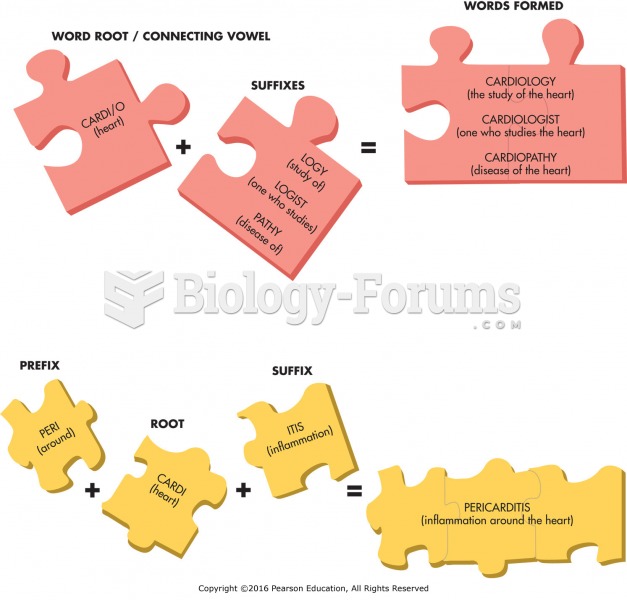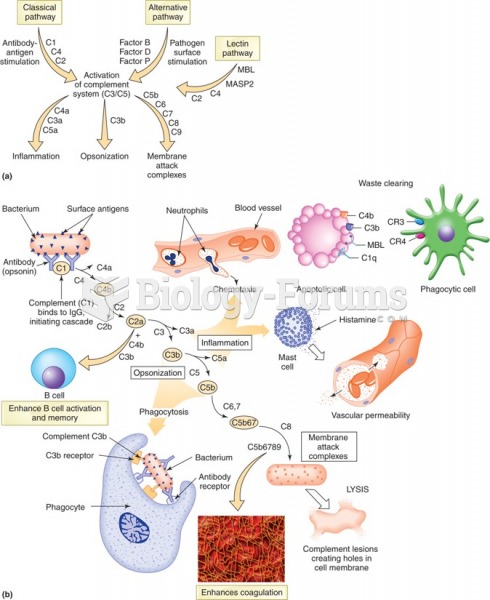|
|
|
If you could remove all of your skin, it would weigh up to 5 pounds.
More than one-third of adult Americans are obese. Diseases that kill the largest number of people annually, such as heart disease, cancer, diabetes, stroke, and hypertension, can be attributed to diet.
In the United States, there is a birth every 8 seconds, according to the U.S. Census Bureau's Population Clock.
Most strokes are caused when blood clots move to a blood vessel in the brain and block blood flow to that area. Thrombolytic therapy can be used to dissolve the clot quickly. If given within 3 hours of the first stroke symptoms, this therapy can help limit stroke damage and disability.
On average, someone in the United States has a stroke about every 40 seconds. This is about 795,000 people per year.







